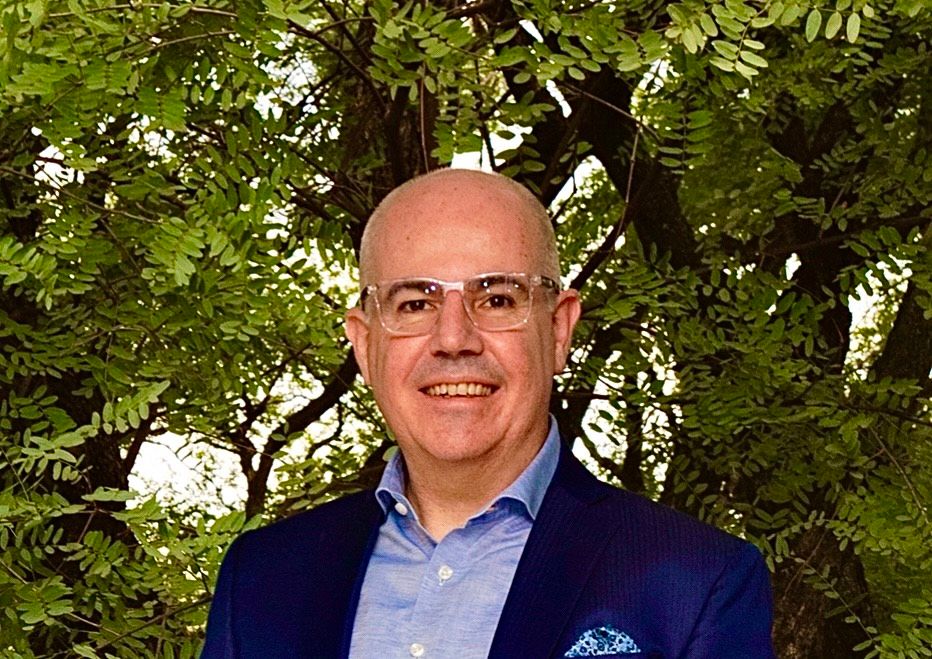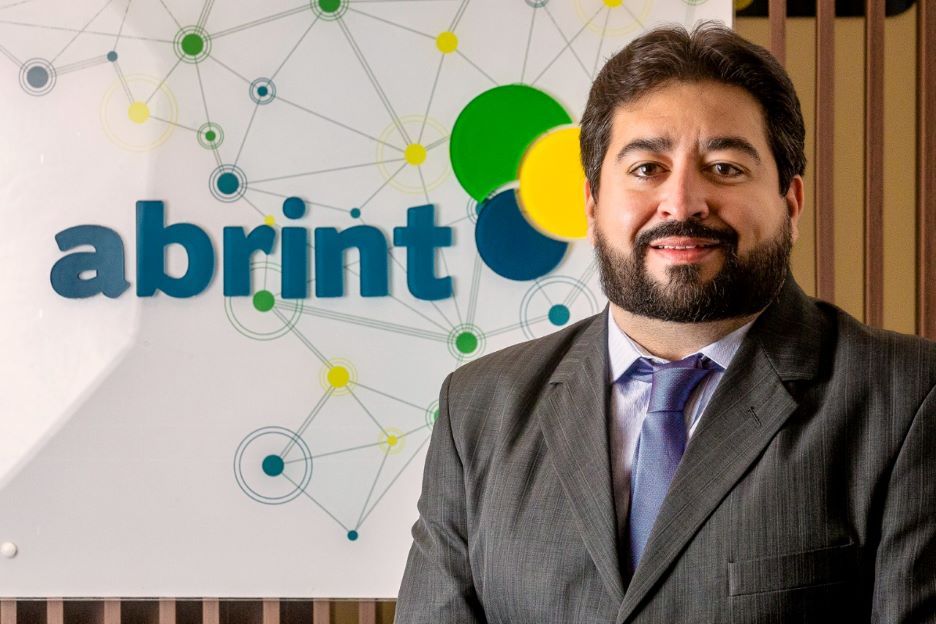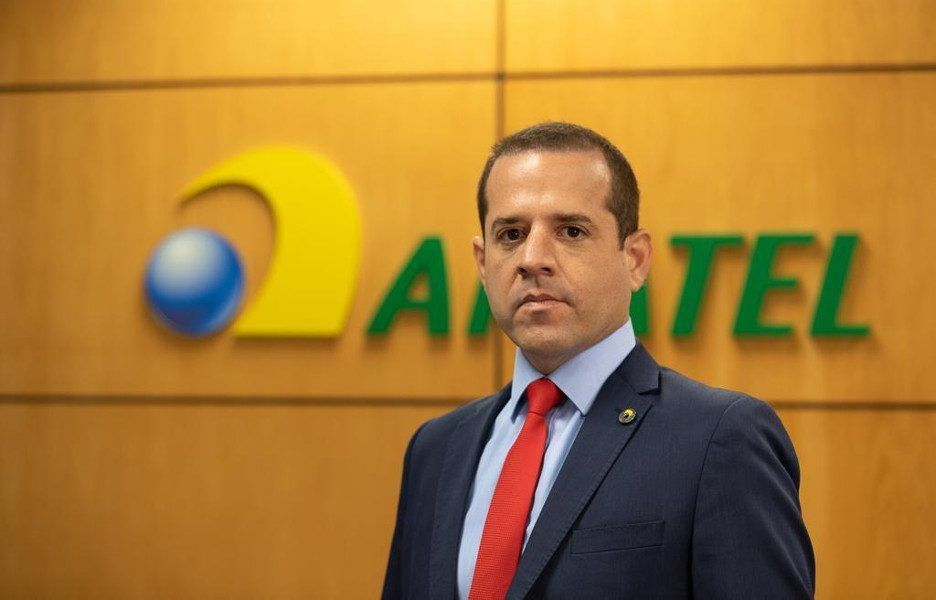-
Foyer120 mins
- Capacity LATAM 2025
-
Registration opensFoyer60 mins
- Capacity LATAM 2025
-
Conference Room15 mins
- Capacity LATAM 2025
Juan Velandia from Telegeogrpahy will highlight the State of the Market run through.
Capacity LATAM 2025 will open with a top-level overview of regional market trends across the digital infrastructure landscape, including:
-
The impact of economic and social conditions on the region
-
Recent investments and emerging technology updates across infrastructure, subsea cables, data centres, fibre networks, AI and more
-
A review of funding sources, including government initiatives, VC, PE and international investments
-
Insights on the top news happening in different countries in the region
-
Conference Room50 mins
- Capacity LATAM 2025
This opening keynote will explore the present and future of the region’s connectivity industry , from the main opportunities flourishing in the ecosystem, to the challenges faced by operators in 2025 and beyond. This Keynote will focus on Brazilian Telecom operators as well as:
- How the industry is preparing for the next 5 years, from technological advancements to long-term strategic planning
- How to prepare for the challenge of cybersecurity: anti-fraud network APIs, data protection and protecting your customers
- How AI technologies can optimise network capacity and enhance customer experience driving economic growth and digital inclusion
-
Networking and coffee breakFoyer30 mins
- Capacity LATAM 2025
-
Conference Room45 mins
- Capacity LATAM 2025
As international traffic continues to grow, subsea cables are vital for providing reliable and high-capacity internet connections. From capacity management, sustainability, network resilience, regulatory compliance to cybersecurity, this session will explore the issues and developments in subsea cables and how industry players are leading the way:
- A review of key partnerships and developments happening in the region such as: Google’s Fermina cable connecting Uruguay and Argentina, Humboldt cable connecting Chile and the US
- Updates on new subsea systems from V.tal, to Liberty and Gold Data, we will discuss the latest system developments
- The role of Festoon cables within the region
-
Conference Room45 mins
- Capacity LATAM 2025
In recent years, the increasing demand has led data centres to deploy rapidly and innovate to keep up with market expectations. This panel will explore how data centres are forming partnerships within the ecosystem, and working closely with operators to meet demand from hyperscalers.
- Investment trends and expansion strategies, impact on local infrastructure, sustainability and efficiency, emerging technology innovation and DC hub
- Key partnerships happening in the region to scale and meet demand: Elea and Deerns, Orchest and Bridgepoint and more.
- Highlighting the DC hotspots in the region: Brazil, Chile, Colombia, Peru and Argentina
-
Networking lunchComplexo60 mins
- Capacity LATAM 2025
-
Conference Room5 mins
- Capacity LATAM 2025
Capacity LATAM 2025 will open with a top-level overview of regional market trends across the digital infrastructure landscape, including:
- The impact of economic and social conditions on the region
- Recent investments and emerging technology updates across infrastructure, subsea cables, data centres, fibre networks, AI and more - A review of funding sources, including government initiatives, VC, PE and international investments
- Insights on the top news happening in different countries in the region
-
Conference Room40 mins
- Capacity LATAM 2025
Fortaleza is a key strategic connectivity hub in Brazil, driven by its ideal geographical location and robust infrastructure investments. As key subsea cables land on its shores, the city is positioned to enhance international communications and digital services, fostered by government support and a burgeoning tech ecosystem. This session will explore:
- The city’s growing technology ecosystem, made up of vibrant startups and established companies focused on IT, telecommunications and digital services
- Investment infrastructure: Significant investments in telecommunications infrastructure, including data centres and fibre optic networks
- Infrastructure development supported by Government initiatives to encourage investment and further boost the development of Fortaleza
-
Conference Room45 mins
- Capacity LATAM 2025
In a post-pandemic world, over 23 million people work remotely in LATAM, leading to increased network traffic, especially due to video calls These growing data demands require modern infrastructure for all citizens. This panel will tackle how Growth and Investment in ISPs and FTTH contributes to digital inclusion, fosters new business opportunities and partnerships in the ecosystem, including:
- Integration of ISPs with emerging technologies, development of innovative service offerings, infrastructure development, support for local enterprises, sustainability and energy efficiency
- How smaller ISPs contribute to enabling digital inclusion and economic development in rural areas, including how they support PIX (a government backed digital payment system), as well as recent partnerships and investments in the ISP market, such as Vero Internet and AmericaNet’s merger
- Advancements in technology enabling faster and more efficient FTTH installations, such as passive optical networks (PON) and how FTTH can bridge the digital divide in underserved communities, improving access to education, healthcare, and economic opportunities
-
Conference Room15 mins
- Capacity LATAM 2025
DE-CIX: The birth of new interconnection hubs in Brazil: Empowering local connectivity & elevating Brazil’s digital future In this presentation, Ivo Ivanov, CEO of DE-CIX will talk the audience throug ...
-
Networking and coffee breakFoyer25 mins
- Capacity LATAM 2025
-
Conference Room40 mins
- Capacity LATAM 2025
As the agricultural sector faces increasing pressures from climate change, population growth and the demand for sustainable practices, innovative technologies are essential for ensuring food security and enhancing productivity. This panel will explore how Operators and Satellite companies are partnering with Agritech businesses to generate growth and positive impact. - How operators can work with farms to offer IoT solutions that monitor crops, soil conditions, and weather patterns in real-time
- The main trends and impact of Low Earth Orbit (LEO) satellites, GEOs and Fibre on the agriculture industry:
- Rural broadband expansion and smart farming solutions in partnership with Agritech companies, offering new revenue channels, as well as enhanced communication services leading to increased usage of voice and data services
- This session will spotlight initiatives in different regions of LATAM such as Brazil, Bolivia, Colombia, and Peru
-
Conference Room45 mins
- Capacity LATAM 2025
This session will spotlight Chile as it works towards establishing itself as a leader in LATAM’s connectivity industry, highlighted by Chile Digital 2035 and the AI National Policy, two government lead strategies focused on reducing digital inequality and guiding the digital transformation of the country by promoting digital rights, AI and infrastructure development, cybersecurity, and digitalization of the public sector. This session will explore:
- Chile as a technology hub in LATAM, with sought after digital skills for the rest of the region
- Data Centres in Chile will and their role in improving connectivity between Argentina, Chile and Uruguay
- The expansion of 5G in Chile and how Operators are preparing for the future growth of the ecosystem
-
Conference Room20 mins
- Capacity LATAM 2025
This Fireside Chat will focus on the evolution of voice and messaging technology in the region, and how it is shaping the future landscape for businesses and consumers
- How CPaaS solutions can help telcos monetise mature and emerging services more efficiently
- Ways in which businesses can use automation while ensuring fraud prevention in the industry
- How Infobip’s MNO launch collaboration helps cover the entire Brazilian market, offering a complete solution for enterprises applicable to their entire user base
-
) Entertainment powered by Grupo MultiwayFoyer15 mins
Entertainment powered by Grupo MultiwayFoyer15 mins- Capacity LATAM 2025
-
Networking drinksFoyer60 mins
- Capacity LATAM 2025
-
Foyer90 mins
-
Conference Room10 mins
-
Conference Room30 mins
- Capacity LATAM 2025
This Fireside Chat will explore the current state of connectivity in Argentina, highlighting both recent challenges and opportunities in the region. In a landscape affected Argentina’s economic challenges, how can the country attract international companies and talent to grow the industry. The session will cover the following:
- Geographic and socioeconomic barriers affecting access, especially in rural regions - Incentives for international companies to open and expand in Argentina
- An insight on emerging technologies and innovations, and how advancements in 5G, fibre, and satellite as well as what the next 5 years of innovation look like
- Opportunities for connectivity providers in Argentina and the introduction of Satellite Internet Providers
- Emergence of data centre investment in the region
-
Conference Room35 mins
- Capacity LATAM 2025
As the current telecommunications landscape in LATAM undergoes rapid transformation, the need for strategic funding and investment has never been more critical. This session will explore current funding sources: government initiatives, main trends, venture capital and international investment, including:
- Alternative financing models such as public-private partnerships
- How foreign investment contributes to the growth of the country, including challenges as well as funding strategies aimed at connectivity in underserved areas
- Brazil’s USD 4 billion fund dedicated to AI ventures
-
Conference Room35 mins
- Capacity LATAM 2025
This panel will examine the investment landscape for subsea cable infrastructure in LATAM. Industry leaders will discuss the strategic importance of these cables for connectivity, the role of major tech companies like Meta and the potential economic impacts on the region:
-
What are the main drivers of some of these models, from hyperscalers building for their data needs to Telecomunication companies building to sell capacity
-
Private cables e.g. CSN-1 (Telconet), TAM-1 or Brusa/traditional consortiums e.g. Americas -2 hyperscale led consortiums (Monet) and hyperscale private (e.g. Firmina).
- The MANTA subsea system will be the first international submarine cable in the Gulf of Mexico, connecting Mexico and the USA with Central and Latin America
-
The role of governmental funding and investment
-
Conference Room15 mins
- Capacity LATAM 2025
The Quantum Threat: Preparing networks for a secure future presented by Nokia
The advent of quantum computing poses a significant challenge to the security of our current networks. Quantum computers can break many of the encryption algorithms currently in use, compromising the confidentiality and integrity of our data. In this presentation, we will explore the basics of quantum safe networks, designed to resist quantum computer attacks. We will also discuss the importance of preparing the networks for a post-quantum world and provide an overview of current quantum safe network solutions.
-
Networking and coffee breakFoyer30 mins
- Capacity LATAM 2025
-
Conference Room30 mins
- Capacity LATAM 2025
This panel will explore how AI is transforming data centres in Brazil. From the latest AI technologies, to energy efficenncy, securitng and the future landscape of data centres in the region.
-
How AI-driven automation tools are streamlining data centre operations, reducing human error, and increasing operational efficiency.
-
From smart cooling systems to sustainable practices, this session will address the importance of integrating AI with renewable energy sources.
-
Exploring the need for investment in modern hardware and network capabilites to support advanced AI applications
-
Latency requirements for deploying AI models.
-
Conference Room20 mins
- Capacity LATAM 2025
This session will explore the evolving landscape of shared infrastructure among MNOs in Brazil. Industry experts will discuss the benefits, challenges and technological advancements driving collaboration in network infrastructure, with a focus on improving connectivity, reducing costs and enhancing service delivery.
- Overview of existing models, including successful partnerships and collaborations
- Innovative solutions that facilitate infrastructure sharing such as cloud-based solutions, open RAN, as well as the role of shared infrastructure in the rollout of 5G networks.
- Future outlook and strategic partnerships, including regulatory considerations and challenges that hinder the success of shared infrastructure initiatives.
-
Conference Room20 mins
- Capacity LATAM 2025
This session will focus on the advantages of fixed wireless technology, from its applications in less dense communities to the emerging revenue streams for private networks. This session will discuss:
- Use cases for fixed wireless in LATAM including rural education initiatives, telemedicine, and smart agriculture.
- Revenue streams for private networks: analysing how organisations can leverage private networks to create additional revenue streams, from smart cities, to supply chain or manufacturing.
- Benefits of private networks for businesses, including enhanced security, control over network performance, and tailored solutions to meet specific operational needs.
-
Lunch breakComplexo65 mins
- Capacity LATAM 2025


)
)
)
)
)
)
)
)
)
)
)
)

)
)
)
)
)
)
)
)
)
)

)

)

)
)
)
)
)
)

)
)
)
)
)
)
)


)
)
)
)
)


)
)
)

)
)
)
)
)
)

)
)
)
)
)
)
